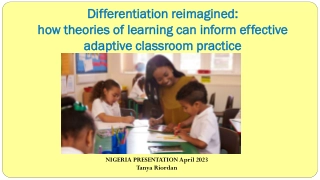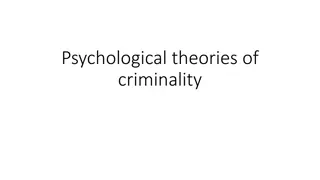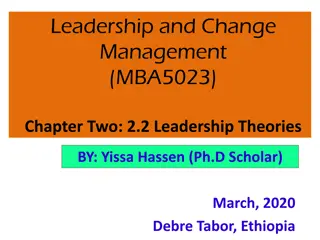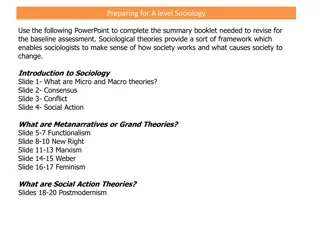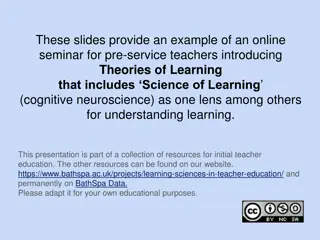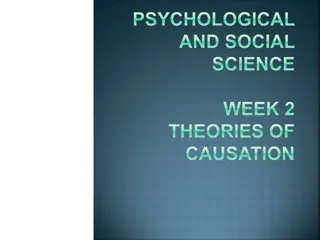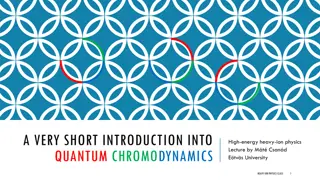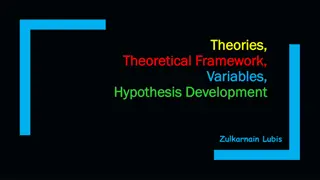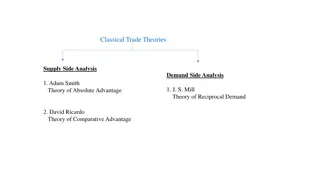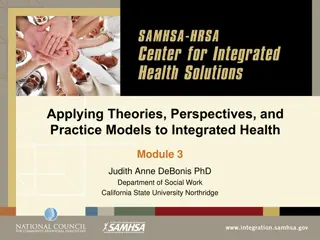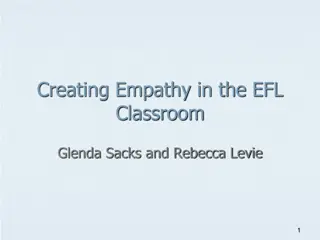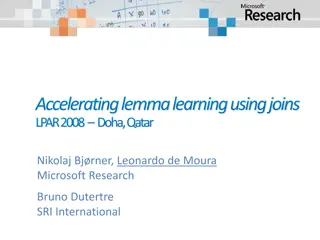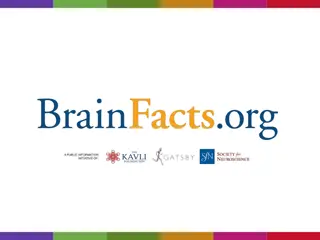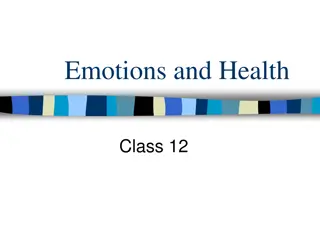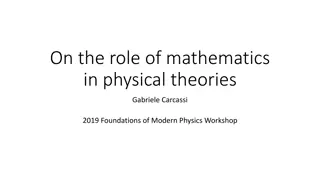Biopsychology of Emotions: Theories and Research
Fascinating world of biopsychology of emotions through theories like James-Lange, Cannon-Bard, and Schachter-Singer, along with early research by Darwin. Discover how emotions evolve, impact physiology, and drive behavior, including the intriguing concept of sham rage in animals.
Download Presentation

Please find below an Image/Link to download the presentation.
The content on the website is provided AS IS for your information and personal use only. It may not be sold, licensed, or shared on other websites without obtaining consent from the author.If you encounter any issues during the download, it is possible that the publisher has removed the file from their server.
You are allowed to download the files provided on this website for personal or commercial use, subject to the condition that they are used lawfully. All files are the property of their respective owners.
The content on the website is provided AS IS for your information and personal use only. It may not be sold, licensed, or shared on other websites without obtaining consent from the author.
E N D
Presentation Transcript
Chapter 10 Biopsychology of Emotions, Stress and Health
What is emotion? A feeling that differs from an individual's normal state 3 central features: Change in physiological arousal Affective component Motivation to act or behave
Early research Darwin s The Expression of Emotions in Man and Animals was the first major investigation into biological bases of emotion Emotions evolved to indicate what an animal would do next in a given situation These behaviours were advantageous to the animal
James-Lange theory Suggests that emotion-inducing stimuli are received and interpreted by the brain This triggers visceral changes (changes in the abdomen or thorax) that subsequently trigger the experience of emotion
Problems with James-Lange theory Cannon (1927) Emotion can occur in the absence of visceral response Emotional responses often occur too quickly to be a result of visceral changes Visceral modifications cause kinds of emotional situations and slight physiological difference between emotional states cannot be sensed
Cannon-Bard theory Canon-Bard theory is an alternative theory based on the idea that emotional stimuli evoke visceral and emotional responses that are independent of one another
Schachter-Singer theory When aroused or tense, and cause is unknown, we attribute arousal to environmental conditions Schachter-Singer study (1962) Participants injected with adrenaline Uninformed or misinformed of drug effects Attributed arousal to environment
Sham rage Pretend, or sham, rage is a quasi-emotional state It is produced in animals by removing the cerebral cortex (decortication) Bard first recognized this occurrence when he observed that cats that no longer had a cortex would still have an aggressive reaction to stimuli (Bard, 1929) Removal of the cortex down to the hypothalamus still triggered sham rage in the cats Hypothalamus must play a role in expressing aggressive responses
Anatomy of emotions: the limbic system Papez Circuit Limbic system is Involved in the cortical regulation of emotion Learning and memory, emotion and social behaviour Long circuitous pathway in the forebrain of mammals First attempt to suggest an anatomical substrate of emotional experience
Hippocampus Role in memory formation and the process of long-term potentiation The hippocampus and the amygdala are connected Hippocampal complex influences the amygdala reactions whenever emotional activities occur Emotional meaning
Amygdala The structure forms connections with the hippocampus, the septal nuclei and the prefrontal area as well as the medial dorsal nucleus of the thalamus Plays a role in forming and storing memories connected with emotional occurrences Fear conditioning Central nuclei
Thalamus Lesion or stimulation of the medial dorsal and anterior nuclei of the thalamus have been associated to altered emotional behaviour
Hypothalamus Lesions of the hypothalamic nuclei disrupt both sleep and wakefulness along with motivational behaviours, body temperature, sexual behaviours, fight reaction, appetite and thirst (Flament-Durand, 1980) Lateral sections appears to be associated with pleasure and anger, while the median section is believed to be associated with aversion and displeasure
Cingulate gyrus Located in the medial area of the brain in the middle of the cingulate sulcus and the corpus callosum Anterior cingulate gyrus appears to be involved in unconscious priming with pleasurable episodic memories and is involved in the emotional reaction to pain as well as the control of aggressive behaviour
Ventral tegmental area Located in the mesencephalic part of the brain stem This area is associated with the experience of happy feelings and intense romantic love (Xu et al., 2011)
Septum Located in a position that is anterior to the thalamus This area has been connected to various types of pleasant feelings, mainly those that have to do with sexual experiences (Chozick, 1985)
Prefrontal area Even though it is not really part of the traditional limbic circuit, it is made up of links to the thalamus, amygdala and other sub-cortical structures Disruption of dorsomedial prefrontal cortical-amygdala connectivity has recently been implicated in postpartum or postnatal depression (Moses-Kolko et al., 2010)
A definition of aggression Behaviour motivated by the intent to harm another being Many diverse behaviours can be considered aggressive
Insular This area is also responsible for processing tastes and may be pivotal to the experience of feeling disgust (Phillips et al., 1997)
Cerebral hemispheres and emotion Behavioural approach system (BAS) left hemisphere is believed to regulate appetitive motives, in which the goal is to move towards something desired Behavioural avoidance (or inhibition) system (BIS) right frontal and temporal regions are said to regulate aversive motives, in which the goal is to move away from something unpleasant An imbalance in BIS and BAS levels is reportedly related to a variety of forms of psychopathology (Scholten, van Honk, Aleman, & Kahn, 2006)
Emotions and facial expressions Paul Ekman and others have been first in undertaking the study of feelings and their correlation to how the face looks (Ekman, 1992) In cross-cultural research on Papua New Guinea's Fore tribesmen, Ekman and Friesman formulated a menu of basic emotions (Ekman & Friesen, 1986) Anger, disgust, fear, happiness, sadness and surprise. The Facial Action Coding System (FACS) is a research tool that was devised to essentially measure facial expressions by defining the muscular movement underlying brief alterations in facial expression All facial expressions can be decomposed into their constituent action units (AU). AUs appear in combinations of expressions (Ekman & Friesen, 1977)
Facial feedback hypothesis The idea of facial feedback is that any facial movement or expressions you make can have a direct effect on your emotional experience (Buck, 1980) Results reveal that facial feedback modulates neural processing of emotional stimuli Botox
Duchenne smile It appears that there are two ways to differentiate genuine facial expressions from expressions that are fake (Ekman, Davidson, & Friesen, 1990) Genuine smiles (Duchenne smiles) involve contraction of both the zygomaticus major and the orbicularis oculi, whereas false smiles only involve the zygomaticus major
Attack behaviours Attack or aggressive behaviours refers to any actions that aim to cause harm or inflict pain There are two general categories of aggression: hostile, affective or retaliatory aggression; and instrumental, predatory or goal-oriented aggression (McElliskem, 2004) Animals use aggression to assist them in obtaining and maintaining territory, as well as in obtaining other needs essential for survival, such as food, water and mating possibilities
Hormones & neurotramsmitters Testosterone Converted to 5a-DHT which acts on androgen receptors Testosterone positively correlated with aggression Glucocorticoids Large a group of fat-soluble hormones that connect to the glucocorticoid receptor and seem to play a role in hostile behaviour and are normally released during aggressive interaction between animals Dehydroepiandrosterone (DHEA) DHEA is an androgen and can swiftly be metabolized into strong androgens and estrogens Serotonin A lack of serotonin has consistently demonstrated a relationship with impulsive aggressive behaviour over several different research paradigms
Stress Stressor: any event that either strains or overwhelms our ability to adjust to our environment Can be physiological or psychological Physiological consequences of stressor influenced by psychological processes
Our biological reaction to stressors Selye (1956) general adaptation syndrome (GAS) 3 stages Stage 1 alarm reaction Sympathetic nervous system arousal Body prepares for fight or flight Reaction lasts minutes to hours When stressor ends, parasympathetic nervous system takes over
Our biological reaction to stressors (cont.) Stage 2 resistance Release of adrenocorticotrophic-stimulating hormone (ACTH) Triggers the release of glucocorticoid hormone leading to Conversion of non-sugars to sugars Enhancement of glycogen storage Increased effectiveness of adrenaline & noradrenaline Systems not involved in stress resistance are inhibited Suppression of inflammatory system Reduction in ability to fight illness
Our biological reaction to stressors (cont.) Stage 3 exhaustion This stage of the general adaptation syndrome is the most hazardous to your health Depletion of physiological resources Failure of electrolyte balance Exhaustion of lipid reserves Inability to produce glucorticoids Damage to vital organs When no resources remain, death ensues
Acute stress: the sympathomedullary pathway Fight or flight pathway associated with acute stress Hypothalamus stimulates autonomic centres in the brain Signals are sent via nerve pathways to the adrenal medulla Adrenal medulla releases adrenaline and noradrenaline into the bloodstream These increase heart rate and blood pressure which supply oxygen to the muscles Liberate energy reserves for physical activity Afterwards PNS restores body to resting state
Chronic stress: the pituitary-adrenal system Associated with chronic stress Hypothalamus stimulates the pituitary gland Pituitary gland releases ACTH travels via the bloodstream to the adrenal cortex The adrenal cortex releases corticosteroids (cortisol) These release stored energy reserves Suppression of the immune system
The immune system - psychoneuroimmunology B-cells B-cells grow to maturity mainly in the bone marrow Release Y-shaped proteins that link specifically to certain Memory B-cells develop out of activated B-cells that are specific to the antigen encountered during the primary immune response T-cells Have special receptor on their cell surface referred to as T-cell receptors (TCR) Natural killer T-cells play a big part in the body's the rejection of tumour cells and cells that are infected by viruses Do not just attack one specific intruder, they attack all of them Other types of T-cell assist other T-cells or B-cells to grow in number Phagocytes Phagocytes or white blood cells guard the body by eating (phagocytosing) damaging non-natural particles like bacteria or dead or dying cells Cytokines To counter infection, leukocyte and other cells produce small proteins known as cytokines These fight infection and communicate with the brain to let you know that you are ill
Post traumatic stress disorder (PTSD) Is a severe anxiety disorder in which a person develops symptoms subsequent to experiencing a horrifying or life threatening event Symptoms include recurring, distressing flashbacks and bad dreams about the event A heightened response to external stimuli (Murray, 1992) Symptoms have to be present for more than 30 days for a PTSD diagnosis, with significant damage in social and other important areas of functioning Individuals with PTSD secrete low amounts of cortisol and high amounts of noradrenaline, suggesting that low cortisol levels may put someone at higher risk of developing PTSD (Meewisse et al., 2007) It appears that hyperarousal of the amygdala is involved in PTSD (Koenigs et al., 2008)
Readings Barnes, J. (2011). Essential Biological Psychology (Chapter 10). London: Sage. The Essentials Oatley, D., Keltner, D., & Jenkins, J. (2006). Understanding Emotions (2nd edn). Chichester: Wiley-Blackwell. Next Steps Glaser, R., & Kiecolt-Glaser, J. (2005). How stress damages immune system and health. Discovery Medicine, 5(26), 165-169. Delving Deeper Phelps, E.A. (2004). Human emotion and memory: interactions of the amygdala and hippocampal complex. Current Opinion in Neurobiology, 14(2), 198-202.
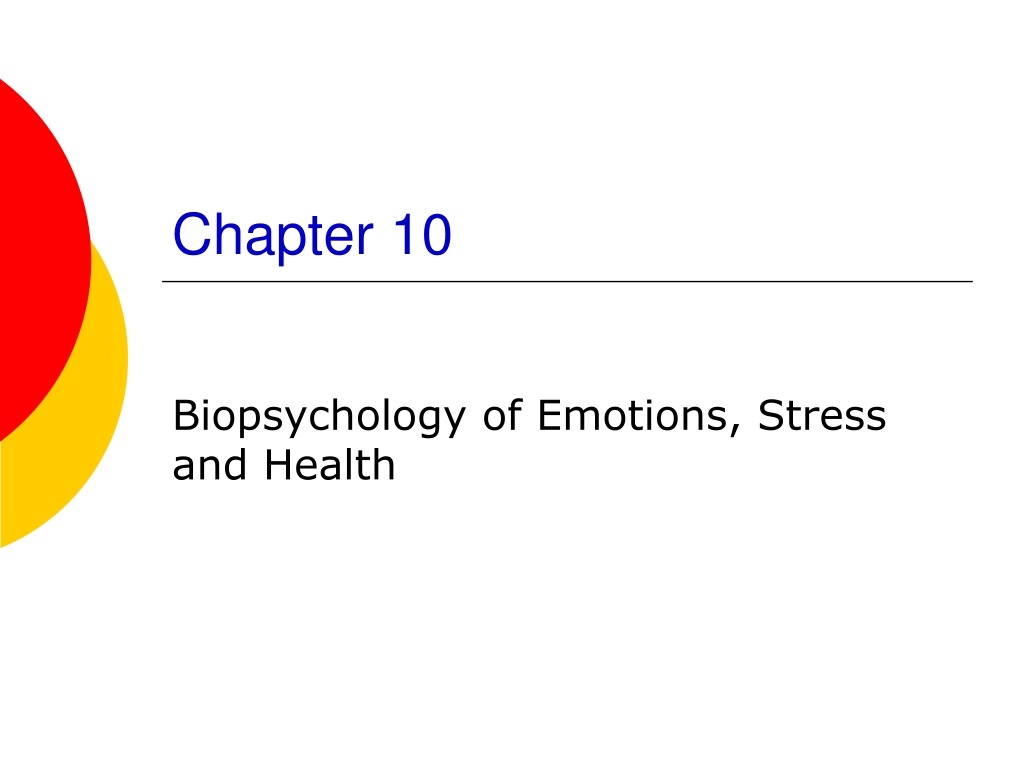
 undefined
undefined

